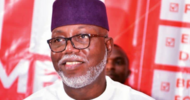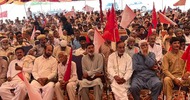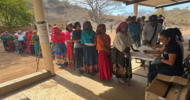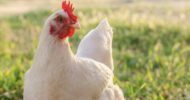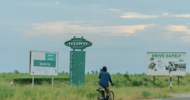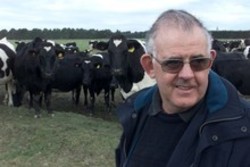
New Zealand Herald | 27 May 2011
By Brian Gaynor
Graeme Wong and John Roadley, the two remaining NZ Farming Systems Uruguay (NZS) independent directors, have thrown in the towel.
They have advised shareholders to accept the 70c a share offer from Olam International even though the dairy industry is booming, the company has an estimated net asset backing of 81c per share and original shareholders paid $1.00 per share, followed by a one-for-two rights issue at $1.50 a share.
The independent directors have capitulated because the promoters and original directors got it all wrong.
Their original plan was to apply New Zealand's intensive farm management systems to Uruguay but the latest Grant Samuel independent adviser's report revealed that "a New Zealand-based system involving predominantly grass feeding is not viable for the Uruguayan environment".
How did former chairman Keith Smith, Craig Norgate and their fellow directors get it so hopelessly wrong? What can investors learn from this destruction of shareholder value and what should they do to avoid a NZS repeat?
NZS was incorporated on September 26, 2006 and shortly after lodged a prospectus for the issue of 75 million ordinary shares at $1 each.
The company's projections were particularly positive and the issue was substantially oversubscribed with 115.6 million shares sold at $1 each.
One of the features of the issue was that three farms were being purchased from promoters PGG Wrightson (PGW) for US$12.4 million.
The first annual report noted: "PGG Wrightson's local knowledge and presence in Uruguay ensured the land acquired has been at prices close to the targeted US$2000 per hectare (ha)". The land purchased from PGW was at US$4600 per ha.
A few months later two farming companies were purchased from interests related to director Murray Flett for US$8.5 million. These related party deals may have been fair to shareholders but NZS had far too many of these transactions, including the sale of farms by the promoter and directors to the company, PGW's incredibly lucrative management contract and the large amount of supplies NZS purchased from PGW.
These party deals have been the bane of New Zealand investors. Investors should stay clear of companies that have a large number of these unless shareholders are asked to approve the transactions. Investors should also be wary when companies deviate from their original plans and forecasts without clear explanation.
NZS's original plan was to accumulate a total farm area of 24,000ha over the longer term. However it immediately went on a spending spree and, by June 2008, had accumulated 36,300ha.
The company had spent US$165.4 million on farms by June 2008, compared with a prospectus forecast of only US$48.3 million, livestock was worth US$40.2 million, compared with a forecast of US$11.6 million and the group had US$96.6 million of borrowings, mostly short-term, compared with a prospectus forecast of no debt.
Meanwhile group revenue for the June 2008 year was just US$7.8 million, compared with the prospectus forecast of US$12.3 million.
NZS may not have successfully introduced our farming practices to Uruguay but it managed to introduce New Zealanders' strategy of acquiring highly leveraged farm land with the intention of making a large, non-taxable capital profit on disposal.
This accelerated land purchase programme benefited PGG Wrightson because its management fee was based on the company's gross asset value with a charge of 1.5 per cent per annum up to June 30, 2008, and 1 per cent after that.
Why did NZS switch from a profit-orientated plan to a land acquisition strategy when the clear emphasis in the prospectus was on profitability? The latter point was emphasised in the original offer document, when chairman Keith Smith wrote: "The board considers that PGG Wrightson has an unmatched combination of knowledge, experience and demonstrated capability, and the infrastructure to be able to put in place the comprehensive package of skills and resources necessary to create a profitable farming business in Uruguay."
This acquisition strategy is not suitable for a listed company as reflected by the recommendation from directors that shareholders should accept the 70c a share offer even though net asset value is 81c after taking into account accumulated losses of US$68 million.
Shareholders should always scrutinise companies that dramatically change their operating strategy, particularly when the directors have little experience of the company's operating region. The NZS directors were described as "highly experienced and knowledgeable in farming and farming investment" but in New Zealand, not Uruguay.
NZS's original plan was not "to do in Rome as the Romans do" but "to do in Uruguay as the New Zealanders do in New Zealand".
The key to success is having a clear strategy and great execution, with strong emphasis on the latter. NZS's strategy was wrong and its execution was dreadful, partly because PGG Wrightson was conflicted and didn't have the expertise to effectively manage Uruguay's largest farm-owning entity.
Directors told the 2009 annual meeting that New Zealanders had not been a great success in Uruguay and the last New Zealand manager, who had just left for home after two-and-a-half years, had never learned Spanish. PGG Wrightson was paid a massive management fee yet its number one man on the ground could not speak the local language.
Shareholders were also told at the 2009 meeting that the key to success in Uruguay was finding and keeping the right local staff. Thus NZS now had a third main focus; the first was the introduction of New Zealand's farming methods to Uruguay; the second was the mad land grab; and the third was finding the right Uruguayan staff.
The Uruguayan company reported big losses in 2009 and 2010 and in July 2010 Olam of Singapore launched a takeover offer at 55c a share. Union Agriculture Group made a counter offer at 60c but it dropped out when Olam raised its offer to 70c.
Olam acquired a 78 per cent stake through last year's offer, PGG Wrightson sold its shareholding, the management contract was internalised and Flett, Norgate and Smith resigned from the board. New Zealand now has little influence over NZS with only Wong and Roadley remaining on the board, the minimum number of NZ directors required under NZX listing rules.
Grant Samuel's latest independent adviser's report reveals that NZS's new management believes that New Zealand's grass-feeding regime will not work on its own in Uruguay. Consequently the company now uses a substantial amount of concentrated feeds, which is much more expensive than grass. The report noted that feed is "necessary to keep the cows in condition to produce both milk and progeny".
A number of figures in the original prospectus, which were derived from PGG Wrightson, and the latest Grant Samuel report illustrate the company's woeful execution.
These include:
NZS has achieved milksolids per cow of only 290kg compared with the prospectus target of 364kg. Under the new concentrated feeds regime NZS is planning to achieve 430kg of milksolids per cow.
NZS is only achieving 580kg of milk solids per hectare compared with its target of 943kg. The company is targeting 1293kg per hectare under the new plan.
NZS targeted 2.6 cows per hectare but it has only achieved 1.7 per hectare. It is aiming to achieve 3.0 cows per hectare under the new strategy.
NZ Farming Systems Uruguay has been one of the worst examples of poor corporate governance, flip-flopping strategy, woeful execution and huge conflicts of interests.
PGG Wrightson and the original directors have a lot to answer because shareholders should now be receiving the benefits of a record high milk price instead of having to consider a takeover offer well below the IPO price.
Disclosure of interest: Brian Gaynor is an executive director of Milford Asset Management.



